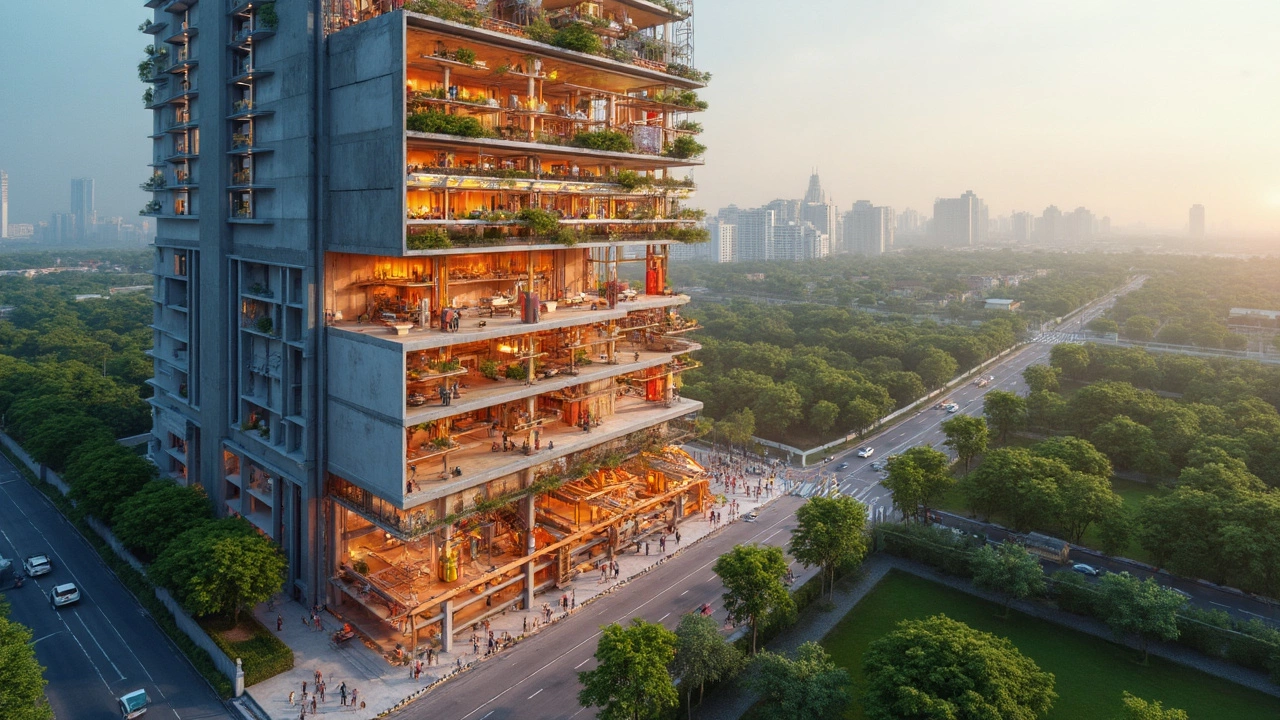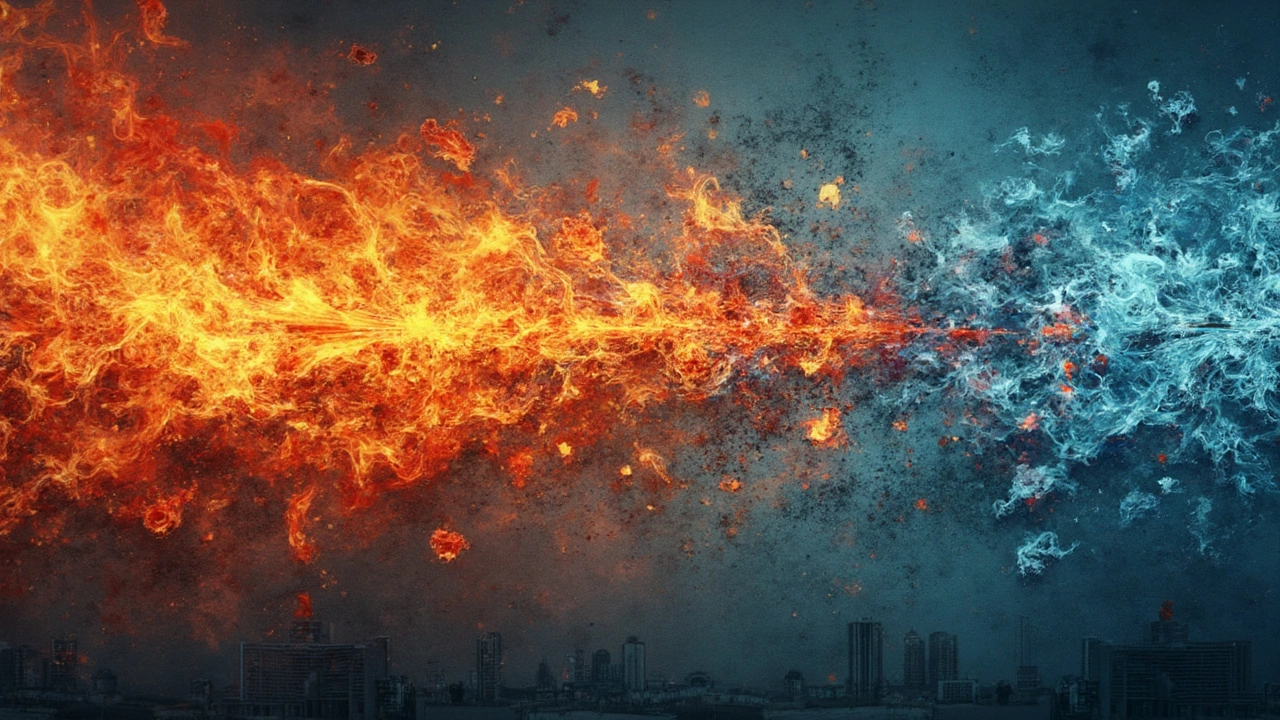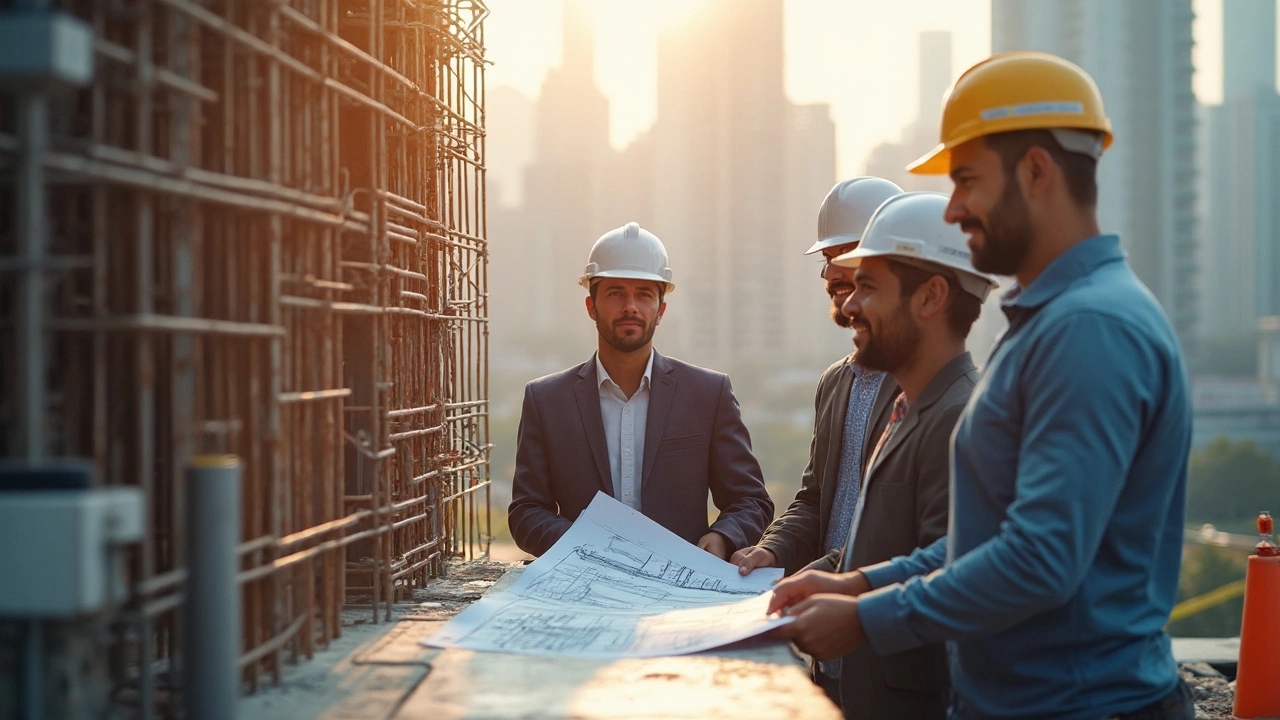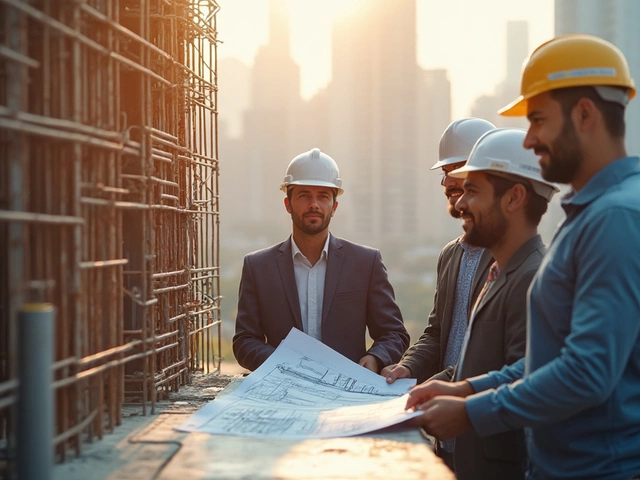When it comes to commercial construction, safety is a big deal. You probably wouldn't want to invest in a building that's a fire hazard waiting to happen, right? That's where understanding fire-resistant materials comes in handy. Fire-resistant construction isn't just about checking boxes on a safety form; it's about protecting lives and property.
So, what exactly does 'fire-resistant' mean? Essentially, it's about how well a building can withstand extreme heat and keep flames at bay. The right materials can make all the difference. From steel and concrete to innovative composites, there are plenty of options that can enhance a building's ability to stand strong when things heat up.
Ever wondered what materials hold up best in a firestorm? Let's get into it and separate the true fire heroes from the smoke and mirrors. We'll explore tested materials that keep disaster at arm's length, and some new players in the construction game that are changing the fireproof landscape as we know it.
- Understanding Fire Resistance
- Top Fire-Resistant Materials
- Innovative Fireproofing Techniques
- Commercial Building Safety Standards
- Practical Tips for Fire-Safe Construction
Understanding Fire Resistance
Fire resistance might sound like a no-brainer, but there's a lot more going on under the surface. It's not just about a material's ability to not catch fire—it's actually about how long it can hold strong and keep a fire from spreading from one part of a building to another. In commercial construction, this is a crucial feature to consider.
What Makes a Material Fire-Resistant?
Let's break it down. A fire-resistant construction material generally has a slow burn rate and can stand intense heat without crumbling. Materials like concrete, steel, and certain types of glass are well-known for their resistance. Concrete, for example, won't ignite and can protect against fire for hours. Steel, while it can lose strength if it gets too hot, can be treated to improve its fire resistance capabilities.
Want to know a pro tip? It's not just about materials themselves. How they're combined and installed can also make a huge difference. Insulating layers can boost a material's fire-resistance and stop the spread of fire.
Testing Fire Resistance
Materials are often put through rigorous tests to see how they handle fire. These tests measure how long a material can withstand the heat of a fire while maintaining its structural integrity. You might have heard the term 'fire rating'—it comes from these tests. A good fireproof material will have a high fire rating, showing it can stand up to real-world fire scenarios.
Why It Matters
Getting the fire resistance spot on in commercial buildings is not just about legal stuff—it's a lifesaver. Think about it: Longer your building withstands a blaze, more time everyone has to get to safety. Plus, it gives firefighters a better chance of controlling the situation before it becomes a full-blown disaster.
Quick Stats
| Material | Fire Rating (Hours) |
|---|---|
| Concrete | Up to 4 hours |
| Steel (Treated) | Up to 2 hours |
| Gypsum | Up to 1 hour |
As you can see, knowing your materials and making smart design choices can be the difference between disaster and safety. Stay sharp and keep those fire ratings in mind for your next project!
Top Fire-Resistant Materials
When it comes to building fire-resistant commercial spaces, the materials you choose make a huge difference. Let's dive into some of the top choices that builders trust to keep flames at bay.
Concrete
Concrete is a staple in fire-resistant construction. Known for its durability and ability to withstand high temperatures, concrete doesn't burn and can slow down the spread of fire. It's like the trusty old friend you've always counted on. Plus, its composition of lime, sand, and water helps it maintain structural integrity even under intense heat.
"Concrete's fire resistance is well-documented, making it a go-to material for commercial builders," says Emma Jensen, a consultant at Canadian Construction Experts.
Steel
Steel might not jump out as fireproof, but it's one of the best when paired with proper insulation. The key is using intumescent coatings, which swell up when they get hot, creating a protective layer around the steel. This keeps it from bending or buckling when temperatures rise.
Gypsum
This might surprise you, but gypsum board (or drywall) is quite fire-resistant. Its core contains water, and when heated, the water evaporates, effectively slowing down the fire's progress. This makes it a must-have for internal wall structures in commercial buildings.
Glass Windows
While glass doesn't immediately scream 'fire-safe,' using specially treated fire-rated glass can be a game-changer. They're designed to withstand high temperatures and provide valuable escape time during a fire.
Modern Composites
Today's market is brimming with innovative materials like fiber-reinforced composites that enhance fire resistance. These mixes of synthetic resins and fibers are lightweight yet strong, offering a new layer of safety.
A good rule of thumb is to ensure that these fireproof materials are incorporated thoughtfully into any commercial plan. Doing so not only boosts safety, but it's an investment in the peace of mind for everyone who steps into that building.

Innovative Fireproofing Techniques
When we think about fireproof materials in construction, things have come a long way from just relying on hefty steel beams and thick concrete walls. With technology advancing at breakneck speed, we’ve got some pretty cool innovations in our toolbox for making buildings safer.
Intumescent Coatings
Intumescent coatings are like a hidden superhero in the world of fire-resistant construction. At first glance, they might look like regular paint, but when exposed to extreme heat, they puff up, forming an insulating barrier. This coating helps to protect the underlying structure from reaching critical temperatures that could cause collapse.
Smart Systems
We can't talk about modern innovation without mentioning smart technology. In today's commercial buildings, smart fire safety systems are becoming a must-have. These systems can automatically detect specific increases in temperature and respond by activating sprinklers or releasing fire-retardant chemicals. It’s a game changer for building safety.
Fire-Resistant Glazing
Ever noticed those big glass windows in high-end commercial buildings? Turns out, they can be fire-resistant too! Thanks to advancements in glazing technology, we now have fire-resistant glass that can withstand high temperatures and help prevent the spread of fire from one section of a building to another.
Data on Material Performance
For all you data nerds out there, check out this straightforward comparison of common construction materials and their fire resistance performance:
| Material | Fire Resistance Rating | Notes |
|---|---|---|
| Steel | 2-4 hours | Requires fireproofing coatings |
| Concrete | 4-6 hours | Excellent insulating properties |
| Gypsum | 1-2 hours | Commonly used in walls |
| Fire-resistant Glazing | Up to 2 hours | Prevents spread of fire |
These ratings give you an idea of how long each material can withstand fire before it starts to weaken, providing a crucial buffer of time for evacuation and firefighting efforts.
It's clear that the landscape of commercial construction safety is evolving. With these innovative techniques, we’re not just building structures; we're creating safer spaces for people to work and thrive. Don't you think it's time to embrace these modern solutions in your next project?
Commercial Building Safety Standards
Building safety standards are a big part of keeping commercial spaces secure. There's more to it than just picking out the right fireproof materials. These standards ensure that buildings are equipped to handle unexpected fires effectively.
The National Fire Protection Association (NFPA) is the go-to organization setting the bar for safety standards. Their widely-referenced NFPA 5000: Building Construction and Safety Code offers a comprehensive guide on how to integrate fire-resistant construction techniques into modern designs. It's pretty much a must-follow for anyone in the construction industry.
The code covers everything from escape routes to fire detection systems and even the spacing between buildings. Oh, and don’t forget that the International Building Code (IBC) also plays a significant role. They map out the necessary fire resistance ratings, meaning how long a particular material or assembly can prevent fire progress.
"The best way to predict the fire performance of your building's construction is by following those key safety standards," says Michael Someit, an expert at NFPA.
Key Safety Components
So, what makes a building comply with these standards? Here’s a breakdown:
- Flame Spread Ratings: Materials used in commercial buildings need to have minimum flame spread ratings—think of it as the speed limit for fire.
- Fire Stops: These are barriers within walls or floors that prevent fire from spreading. They’re like the added seatbelt in your car.
- Smoke Barriers: Stops smoke from moving between compartments. A smart way to keep risks confined.
- Fire Detection and Suppression Systems: Early detection systems paired with automatic sprinklers can be game-changers.
Some Numbers to Crunch
Here are some stats that underline the importance of these standards:
| Metric | Value |
|---|---|
| Fire-Resistant Ratings Required (walls) | 1 to 2 hours |
| Fire Detection Response Time | Within 3 seconds |
| Life Saving Rate with Standards | Over 98% |
It's more than checking boxes—these standards are about having a layered safety plan. Adhering to them can be the difference between a tragedy and a contained incident, ensuring both people and investments are safe.

Practical Tips for Fire-Safe Construction
Building a commercial space that stays safe even during a fire isn't just wise—it's also a responsibility. Whether you're an architect, a construction manager, or a property developer, using fire-resistant construction techniques can provide peace of mind and be a literal lifesaver. Here are some practical tips to make sure your construction project is as fireproof as possible.
Use Fire-Resistant Materials
The first step is selecting materials with high fire resistance. Materials like concrete, steel, and certain fireproof composites rank highly for their ability to withstand high temperatures. These not only prevent the spread of fire but also maintain structural integrity longer.
Install Fire Suppression Systems
A good sprinkler system or fire alarm can be just as important as the construction materials you choose. Ensure you have effective fire suppression systems installed throughout the building. Regular maintenance is key to keep these systems running smoothly when you really need them.
Compartmentalize Your Space
Dividing the building into sections can stop a fire from spreading. Fire rated walls and doors can keep the flames contained to one area, giving escapees more time to get out and firefighters more time to do their job.
| Material | Fire Resistance Rating |
|---|---|
| Concrete | 2-4 hours |
| Steel | 0.5-3 hours (with fireproofing) |
| Gypsum | 1-4 hours |
Implement Clear Safety Protocols
Having a plan is crucial. Regular fire drills and clear exit strategies ensure everyone knows what to do in case of a fire. Make sure exits are clearly marked and free from obstructions at all times.
Regular Inspections and Maintenance
Once your building is up, that's not the end of the road. Regular inspections for structural integrity and equipment effectiveness can prevent a small issue from becoming a huge problem later on. Being proactive beats being reactive any day.
By focusing on these key areas, you can help ensure your commercial building is not just a structure but a safe haven even in the worst scenarios. Remember, commercial building safety starts with smart decisions today.

